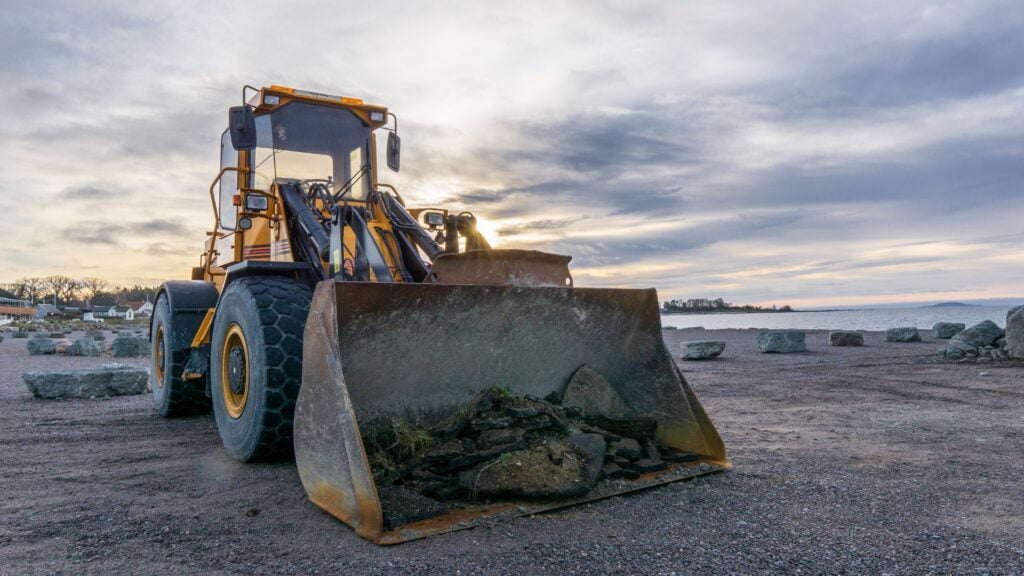Introduction
When it comes to construction equipment, few machines command the same level of power, versatility, and iconic presence as the yellow bulldozer. These heavy-duty workhorses have been shaping the world’s landscapes for decades, playing a pivotal role in various construction projects. In this article, we will delve into the fascinating world of the yellow bulldozer, exploring its history, capabilities, applications, and the impact it has had on the construction industry.
The Evolution of the Bulldozer

The evolution of the bulldozer is a remarkable journey that traces its roots back to humble beginnings in the early 20th century. What started as a simple tractor with a blade for soil pushing has evolved into the powerful and versatile machines we know today. Let’s delve deeper into the fascinating history of the bulldozer and how it has become an indispensable part of the construction industry.
In the early days, bulldozers were basic machines with limited capabilities. They were primarily used for agricultural purposes, helping farmers clear land and move heavy materials. As their potential in construction became apparent, the design of bulldozers underwent significant improvements to cater to the growing demand.
One of the key milestones in the bulldozer’s evolution was the integration of hydraulics into its design. This innovation revolutionized the way bulldozers operated, providing greater control and precision in their movements. Hydraulic systems enabled operators to manipulate the blade effortlessly, making it easier to push and pull heavy materials, such as soil, rocks, and debris.
Understanding the Yellow Bulldozer
The yellow bulldozer, with its striking hue and imposing presence, has become an iconic symbol on construction sites worldwide. But there’s more to these machines than just their eye-catching color. Understanding the yellow bulldozer entails delving into its design, features, and the critical role it plays in the construction industry.
At first glance, the yellow bulldozer’s appearance commands attention. The bold color choice is not arbitrary; it serves a functional purpose. Yellow is known for its high visibility, making the bulldozer easily noticeable amidst the chaotic and often dusty construction environments. This enhanced visibility is vital for ensuring safety on busy work sites, reducing the risk of accidents and ensuring that workers and other equipment operators can spot the bulldozer from a distance.
Beyond its color, the design of the yellow bulldozer is a marvel of engineering. These robust machines are built to handle heavy-duty tasks with ease. Their sturdy chassis and reinforced body provide the strength and durability needed to navigate challenging terrains and tackle formidable construction projects. From leveling uneven ground to pushing massive piles of earth, the yellow bulldozer is up to the challenge.
Components and Mechanisms
1. Engine Power and Efficiency: The engine serves as the powerhouse of the yellow bulldozer, generating the immense force required to tackle heavy-duty tasks on construction sites. Modern bulldozers are typically equipped with advanced diesel engines that offer a perfect balance of raw power and fuel efficiency. The diesel engine’s design ensures that it can handle high torque requirements at lower speeds, allowing the bulldozer to exert formidable pushing and pulling force while conserving fuel during extended operations. This optimal power-to-fuel consumption ratio makes the yellow bulldozer a reliable and cost-effective machine, enabling it to work efficiently without compromising on performance.
2. The Blade: Pushing Boundaries: The blade, often referred to as a dozer blade or push blade, is undoubtedly the most recognizable feature of the yellow bulldozer. Positioned at the front of the machine, this robust attachment is hydraulically controlled, granting the operator precise command over its movements. The blade’s primary purpose is to push or pull materials, such as soil, sand, rocks, or debris. Its size and shape may vary depending on the specific model and intended use, with some blades being straight and others curved to accommodate different tasks. Whether leveling the ground or clearing paths, the blade is a versatile tool that empowers the yellow bulldozer to excel in various construction projects.
Engine Power and Efficiency
The heart of any bulldozer lies in its engine. Modern yellow bulldozers are equipped with advanced diesel engines that deliver an impressive combination of power and fuel efficiency. This ensures that they can handle heavy loads while minimizing environmental impact.
The Blade: Pushing Boundaries
The blade is the bulldozer’s most recognizable feature and is designed to push or pull materials, such as soil, sand, or debris. Different blade types allow for various functionalities, making the yellow bulldozer an incredibly versatile machine.
Hydraulics: Precise Control
Hydraulic systems play a pivotal role in the smooth operation of a bulldozer. They enable the operator to have precise control over the blade’s movements, making it easier to handle different materials and accomplish complex tasks.
Applications of Yellow Bulldozers
Yellow bulldozers find applications in a wide range of industries and construction projects. Some of the key applications include:
Land Clearing and Grading
In construction projects, preparing the land for building or infrastructure development requires efficient land clearing and grading. Bulldozers are the go-to machines for these tasks due to their ability to move and level large quantities of soil and debris quickly.
Road Construction
The construction of roads demands precise leveling and grading to ensure a smooth and even surface. Bulldozers are indispensable in this regard, enabling road construction projects to progress efficiently.
Mining Operations
In the mining industry, bulldozers are used to remove overburden, transport materials, and create access roads for mining operations. Their rugged build and power make them ideal for such demanding tasks.
Landscaping and Earthmoving
Bulldozers play a vital role in landscaping projects, shaping the terrain according to the desired design. Whether it’s creating slopes, terraces, or trenches, bulldozers provide the necessary muscle.
Advantages of Yellow Bulldozers

Yellow bulldozers offer several advantages that contribute to their widespread usage:
Versatility
The ability to handle various tasks with ease makes bulldozers incredibly versatile machines. They can be equipped with different attachments, further expanding their functionality.
Efficiency and Productivity
The power and efficiency of yellow bulldozers significantly impact construction productivity. They can complete tasks quickly, allowing projects to stay on schedule and within budget.
Safety Features
Modern bulldozers come with advanced safety features, ensuring the well-being of operators and workers on the construction site.
Environmental Considerations
As the world embraces sustainability, the construction industry seeks more environmentally friendly solutions. Some bulldozers now come with advanced emission controls and eco-friendly features, reducing their carbon footprint.
Conclusion
In conclusion, the yellow bulldozer stands tall as an emblem of strength, adaptability, and progress in the construction world. From its humble beginnings as a simple tractor with a blade to the modern powerhouse equipped with cutting-edge technology, the evolution of the bulldozer is a testament to human ingenuity and the drive to create machines that can shape the world.
With its robust design, powerful engine, and versatile blade, the yellow bulldozer has become an indispensable asset in the construction industry. Its ability to handle a myriad of tasks, from land clearing and grading to road construction and mining operations, showcases its versatility and efficiency on construction sites worldwide.
The distinct yellow color of the bulldozer not only enhances its iconic presence but also serves a crucial functional purpose, ensuring high visibility and safety for both operators and workers in busy and often hazardous work environments. This commitment to safety reflects the industry’s continuous efforts to improve workplace conditions and protect the well-being of its workforce.
FAQs
Q1: Are bulldozers only used in construction?
A1: While bulldozers are primarily associated with construction, they also find applications in mining, agriculture, and disaster recovery efforts.
Q2: Can bulldozers be operated in extreme weather conditions?
A2: Yes, bulldozers are designed to withstand and operate in various weather conditions, including extreme heat and cold.
Q3: What safety measures should bulldozer operators follow?
A3: Bulldozer operators should wear appropriate safety gear, undergo proper training, and adhere to all safety guidelines on the construction site.
Q4: Can bulldozers be rented for small-scale projects?
A4: Yes, many equipment rental companies offer bulldozer rentals for both large and small-scale projects.
Q5: How do bulldozers contribute to sustainable construction practices?
A5: Some bulldozers now come with eco-friendly features and emission controls, reducing their environmental impact and supporting sustainable construction practices.

